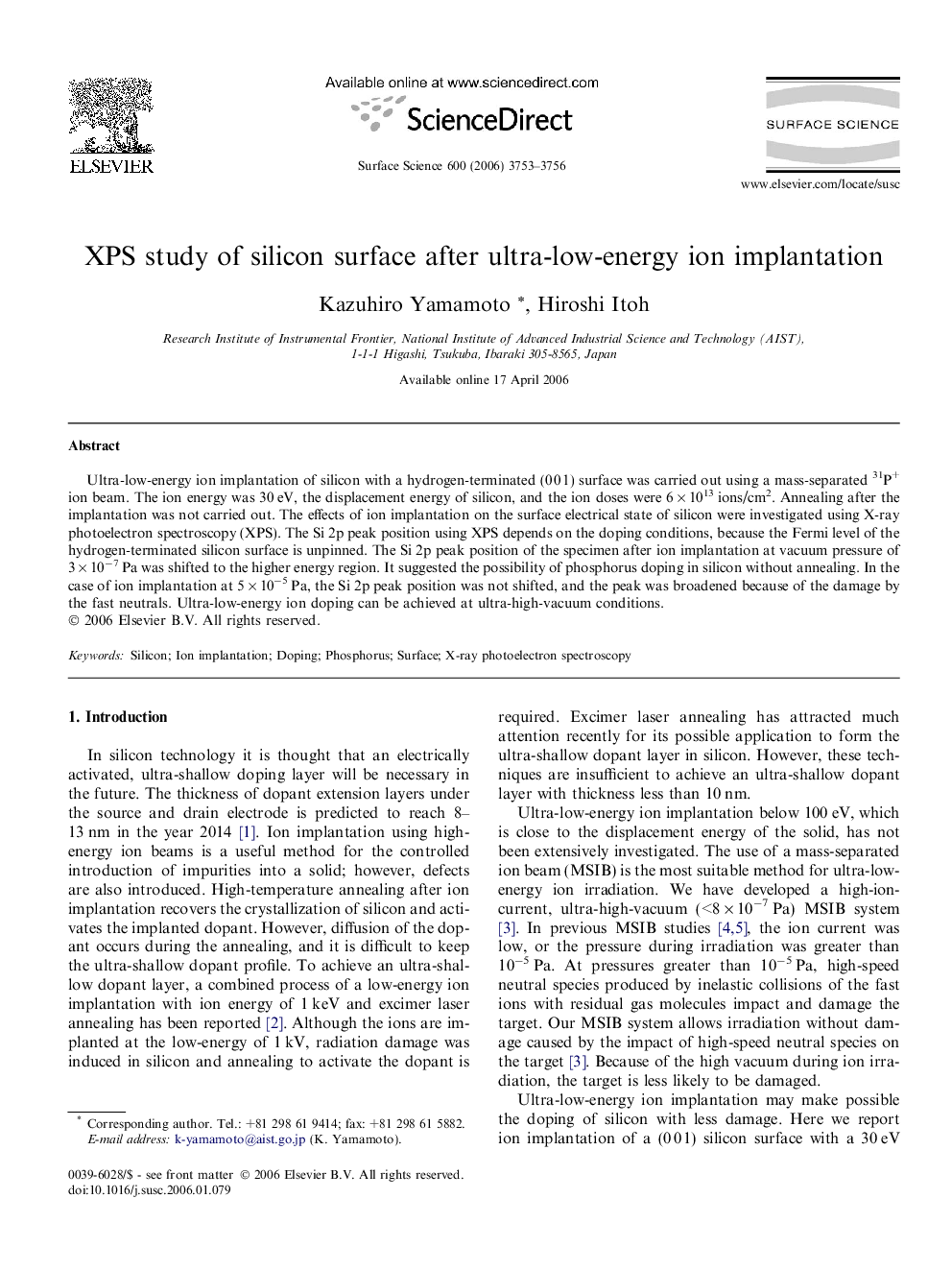| کد مقاله | کد نشریه | سال انتشار | مقاله انگلیسی | نسخه تمام متن |
|---|---|---|---|---|
| 5426419 | 1395889 | 2006 | 4 صفحه PDF | دانلود رایگان |

Ultra-low-energy ion implantation of silicon with a hydrogen-terminated (0Â 0Â 1) surface was carried out using a mass-separated 31P+ ion beam. The ion energy was 30Â eV, the displacement energy of silicon, and the ion doses were 6Â ÃÂ 1013Â ions/cm2. Annealing after the implantation was not carried out. The effects of ion implantation on the surface electrical state of silicon were investigated using X-ray photoelectron spectroscopy (XPS). The Si 2p peak position using XPS depends on the doping conditions because the Fermi level of the hydrogen-terminated silicon surface is unpinned. The Si 2p peak position of the specimen after ion implantation at a vacuum pressure of 3Â ÃÂ 10â7Â Pa was shifted to the higher energy region. It suggested the possibility of phosphorus doping in silicon without annealing. In the case of ion implantation at 5Â ÃÂ 10â5Â Pa, the Si 2p peak position was not shifted, and the peak was broadened because of the damage by the fast neutrals. Ultra-low-energy ion doping can be achieved at ultra-high-vacuum conditions.
Journal: Surface Science - Volume 600, Issue 18, 15 September 2006, Pages 3753-3756